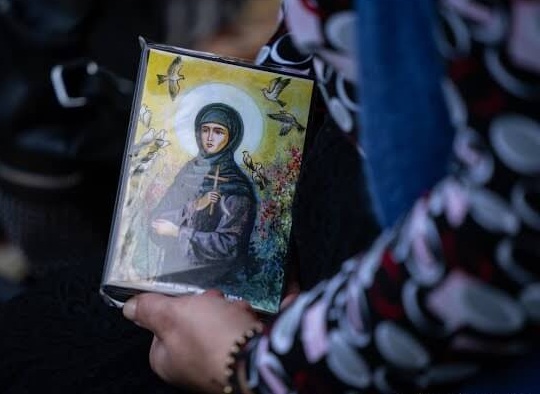Feast Day: August 7th
The Life of Saint Theodora: At this time, the thought of abandoning the world blossomed in her heart. She wished to do penance for her parents, for her sister, and for herself…
+
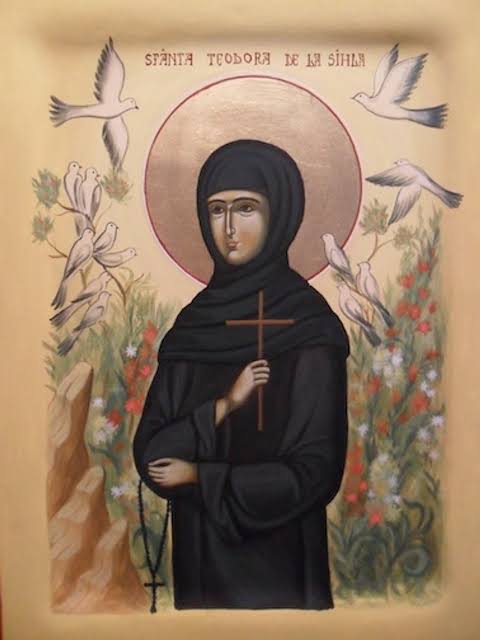

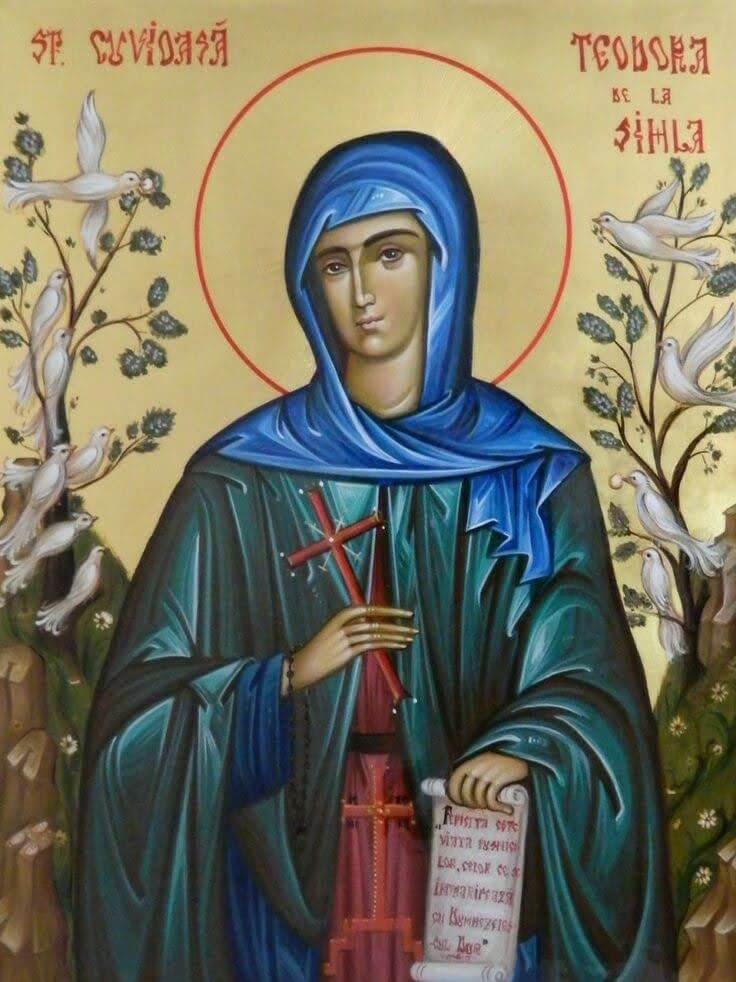

Prayers
Troparion: Leaving behind the things of this Earth and taking up the yoke of a solitary, you were made a bride of Christ, O Blessed one. Through fasting, vigil, and Prayer you were granted Heavenly gifts and became like the Angels. You overcame human nature and moved to the Heavenly places, leaving us the consolation of your cave and of your Holy Relics. Therefore, O Holy and most Venerable Mother Theodora, entreat Christ Our God to save our Souls.
Kontakion: Come, all of you who love Christ, with faith and piety to honour our Righteous Mother Theodora, who laboured zealously in Sihla Hermitage and became a beacon of hermits. Let us praise God and honour His righteous servants saying: Rejoice, most Venerable Mother Theodora, the Spiritual flower of Moldavia.
The thought of abandoning the world blossomed in her heart when her sister died in a tragic way. Saint Theodora wanted to do penance for her parents, her sister, and for herself. However, he parents pleaded with her to marry, and after not having any children, her and her husband decided to enter Monasteries.










+
Saint Theodora fled to the mountains with her Spiritual Mother as the area was invaded. They lived here for several years in fasting, vigil, Prayer, and endured cold hunger and great trials. Following her Spiritual Mother’s Repose, Saint Theodora was advised by her Spiritual Father to live alone in the wilderness for one year… “If, by the Grace of Christ, you are able to endure the difficulties and trials of the wilderness, then remain there until you die. If you cannot endure, however, then go to a women’s Monastery, and struggle there in humility for the Salvation of your Soul.” They then set out to find an abandoned Hermitage for her to live in, they met an old Hermit living beneath the cliffs of Sihla who said… “Mother Theodora, remain in my Cell, because I am moving to another Hermitage.” Saint Theodora lived here for thirty years, only seeing her Spiritual Father who would bring her Holy Communion and some supplies, until he Reposed, then she lived in God’s care alone. Saint Theodora would keep Vigil all night long with her arms lifted up in Prayer toward Heaven. When the morning sun touched her face, she would eat some herbs and other vegetation to break her fast. She drank the rain water which she collected from a channel cut into the cliff, which is still known as Saint Theodora’s Spring.
+
Some time later people were fleeing to the mountains when their village was being attacked. Some nuns discovered Saint Theodora’s cell and she told them… “Remain here in my Cell, for I have another place of refuge.” Then she moved into a nearby cave, living there completely alone. At night she would rest a little on the flagstones, which still can be seen to this day. An army of Turks discovered Saint Theodora’s cave, and were about to kill her when she lifted up her hands and cried out… “O Lord, deliver me from the hands of these murderers.” The wall of the cave then opened up, and she was able to escape into the woods.
+
As Saint Theodora grew old, she was completely forgotten about and there was no one to care for her but she continued her Spiritual struggles. When she Prayed her mind was raised up to Heaven, and her body was lifted up off the ground, her face shone with a radiant light, and a flame came forth from her mouth.
Eventually her clothes became rags, and when her food ran out, she was fed bread by birds, who would bring to to her from the Sihăstria Skete. Seeing the birds come to the Skete and then fly away with pieces of bread in their beaks, the Abbot sent two Monks to follow them, thinking that some Ascetic was living there and that God was providing food for him. It became evening as the Monks walked toward Sihla, and they lost their way in the woods. Deciding to wait for daylight, they began to Pray. One of the Monks climbed a tree and looked for a place where someone might be living. Suddenly, they both saw a bright light rising up into the sky, and went to investigate. As they approached, they saw a woman shining with light and levitating above the ground while she Prayed. Saint Theodora said, “Brethren, do not be afraid, for I am a humble handmaiden of Christ. Throw me something to wear, for I am naked.’ The Monks were amazed when she addressed them by name. Then she Prayed: “I thank Thee, O Lord, that Thou hast heard me.” She said to the Monks, “Brothers, I have lived for many years in these parts, and, behold, it has been forty days since I Prayed for God to send me a Confessor to come and impart unto me the Holy Mysteries of Our Lord Jesus Christ, because it is almost time for me to depart from this life. So, please, go straight to the Skete and ask Father Hegumen to send Father Anthony and Hierodeacon Laurence to me tomorrow morning with Holy Communion.” They asked her how they could find their way to the Skete at night, for they did not know the way. She said that they would be guided to the Skete by a light which would go before them.
The next day at dawn, Father Anthony went to Sihla with the Deacon and two other Monks. When they found Saint Theodora, she was Praying by a fir tree in front of her cave.









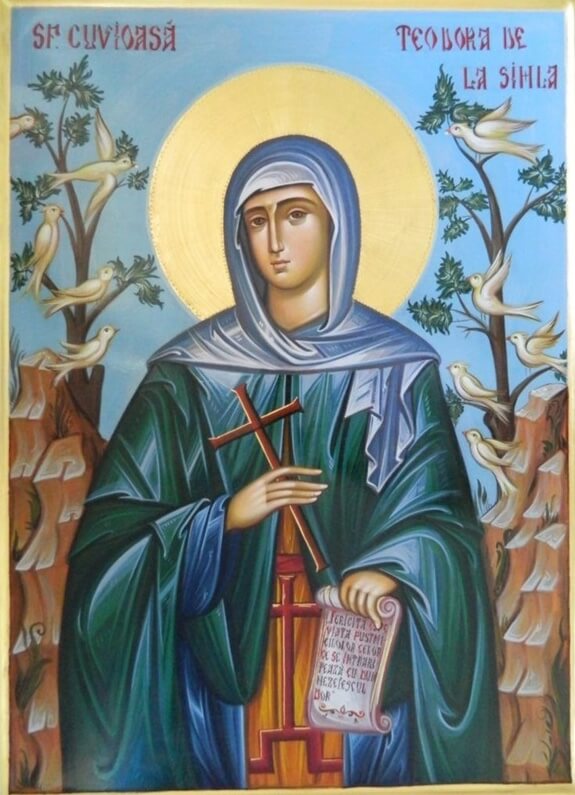






She made a Confession of her entire life to Father Anthony, and then she received the Holy Mysteries of Christ and gave her Soul to God. Her last words were, “Glory to God for all things.”






+
The Monks buried Saint Theodora in her cave with great reverence sometime during the first decade of the eighteenth century. News of her Repose spread quickly, and people came from all over to Venerate her Tomb and later her Holy incorrupt Relics, where many Miracles took place.
Saint Theodore’s former husband, Hieromonk Eleutherios, heard that she had been living at Sihla, and decided to go there. He found her cave shortly after her death and burial. Grieving for his beloved wife, Eleutherios did not return to his monastery, but made a small cell for himself below the cliffs of Sihla. He remained close to her cave, fasting, praying, and serving the Divine Liturgy. He lived there for about ten years before his blessed repose. He was buried in the hermits’ cemetery and the Skete of Saint John the Baptist was built over his grave.
The inscription of Saint Theodora’s scroll is from Sunday Matins Service:
“Life is Blessed for those in the wilderness as they fly upon the wings of Divine Love”.
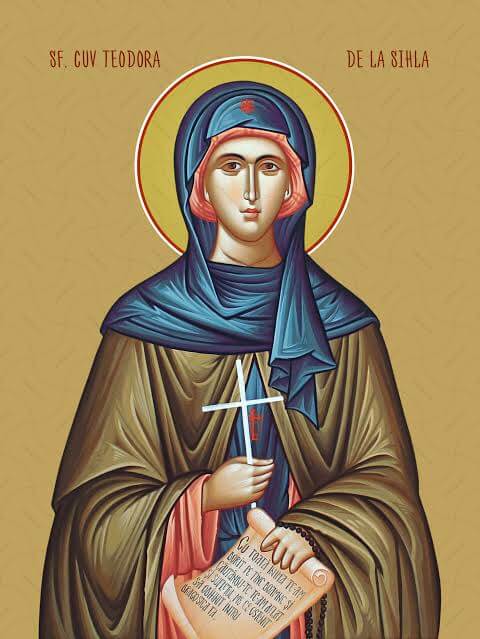




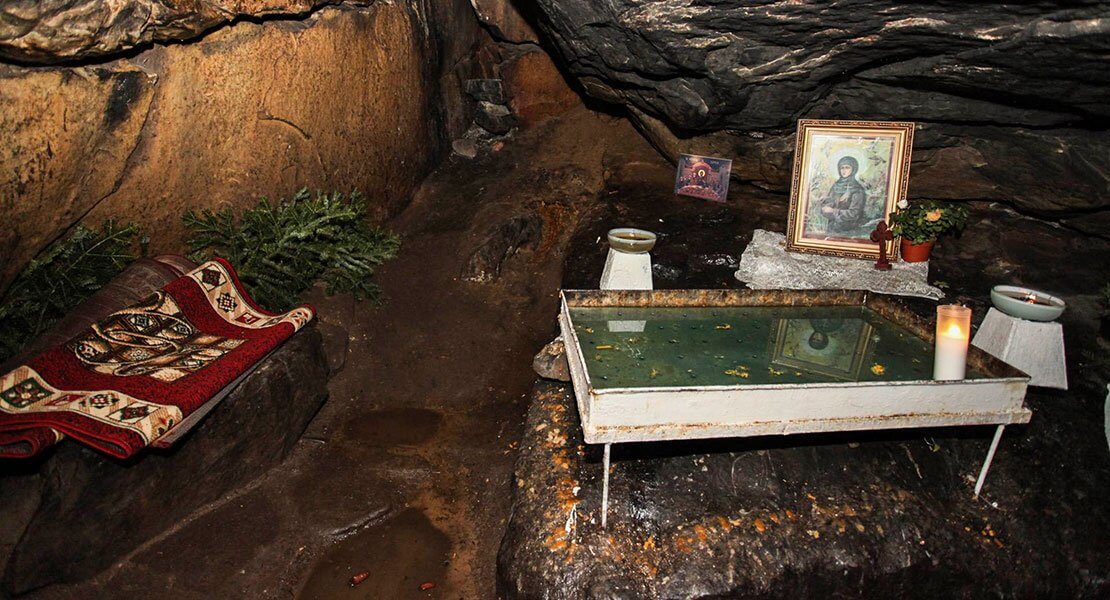











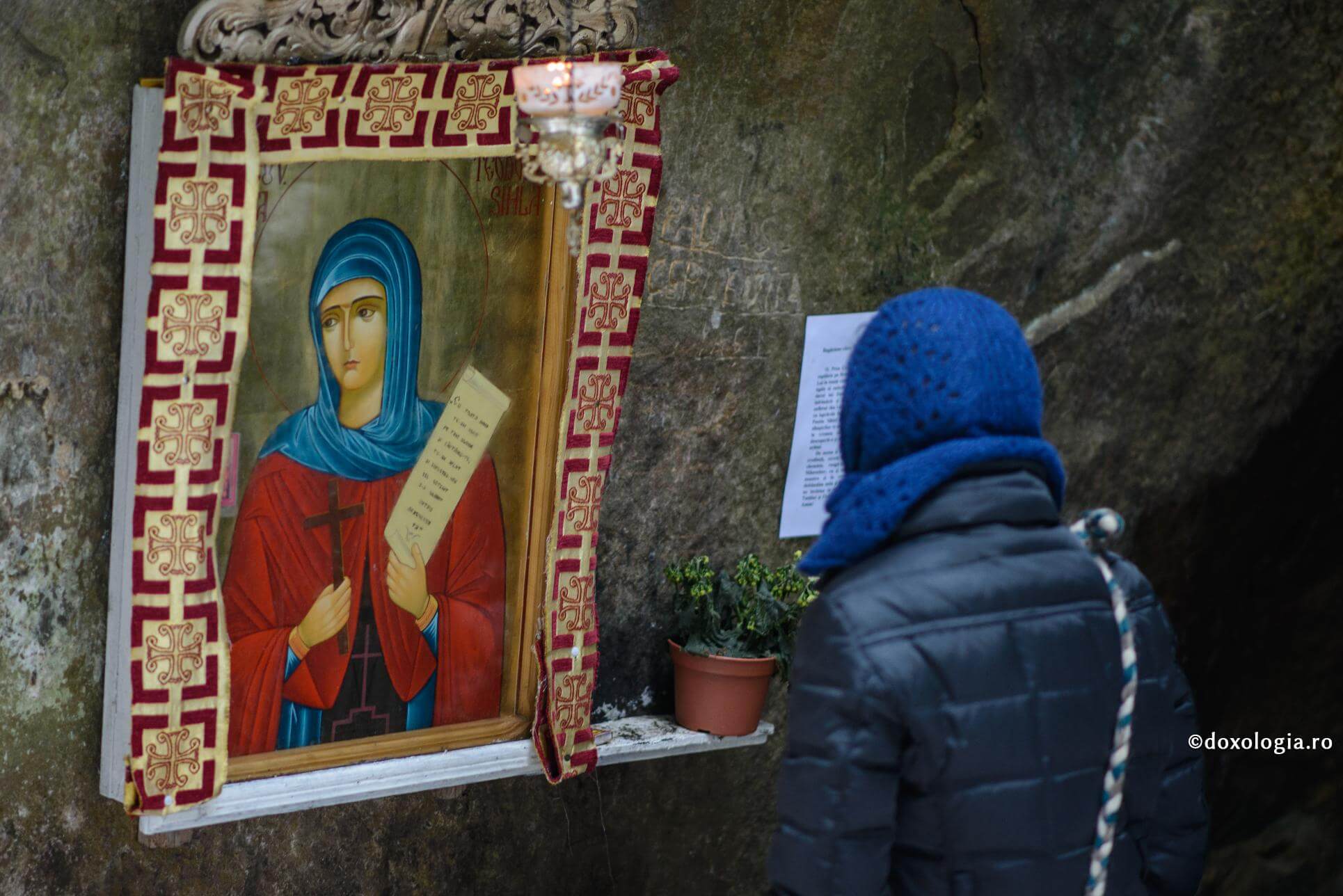




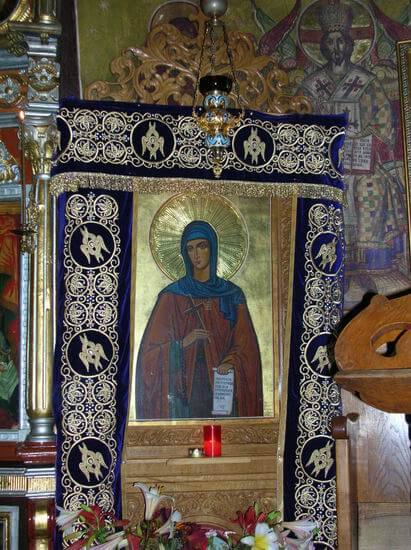

+
Read a recent account by a lady who saw Saint Theodora: “Your blessing, Eldress. Are you coming from Sihla?” “Our Lord and our Panagia. Yes, I was in my house, in my cave, in Sihla, but now I am going to Sichastria because my fathers have built a house there too.”
Icons











